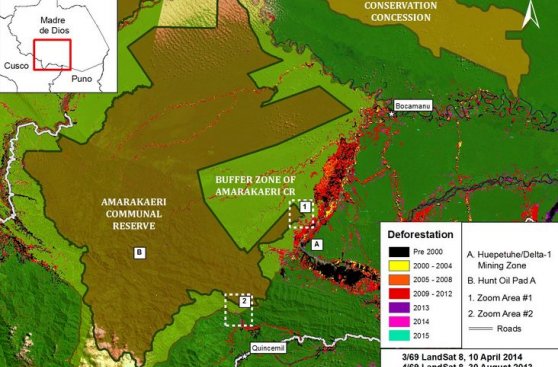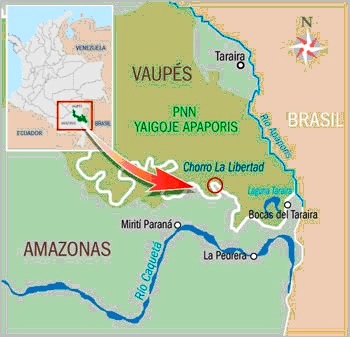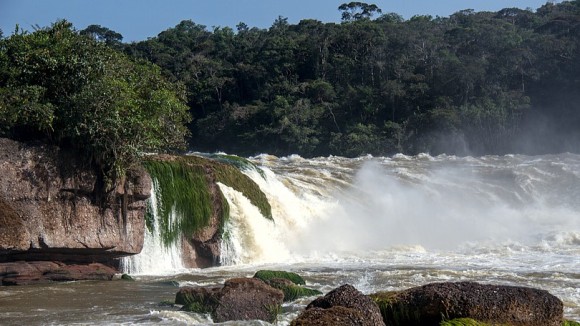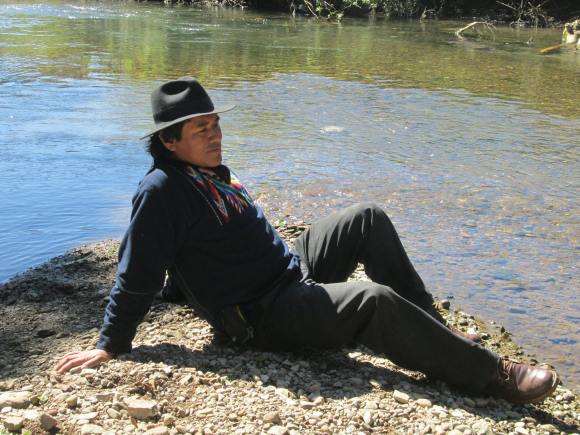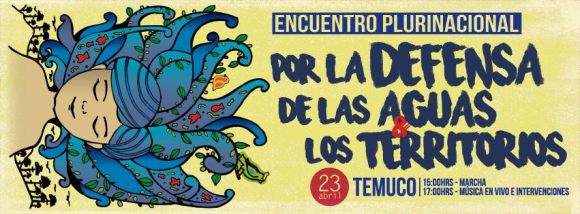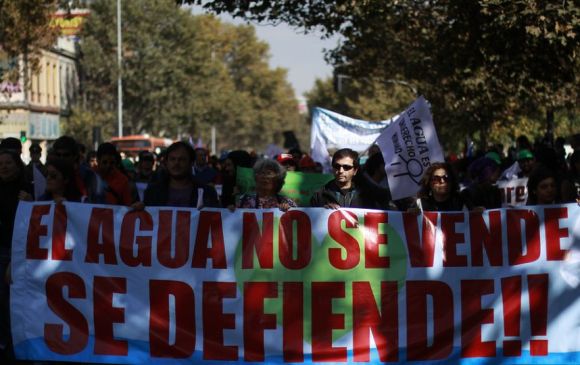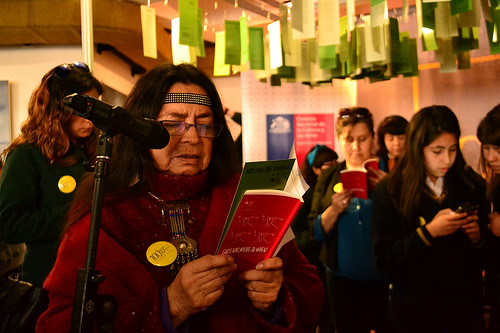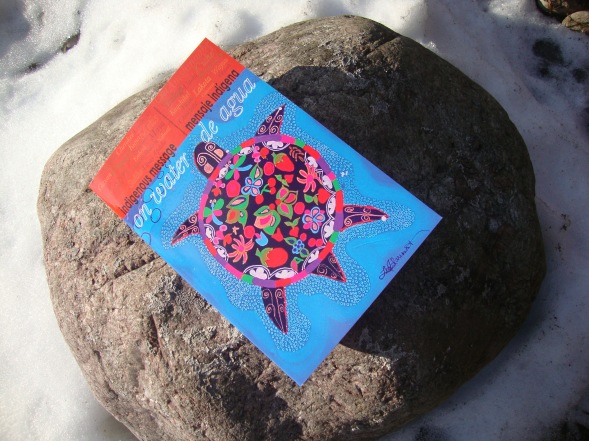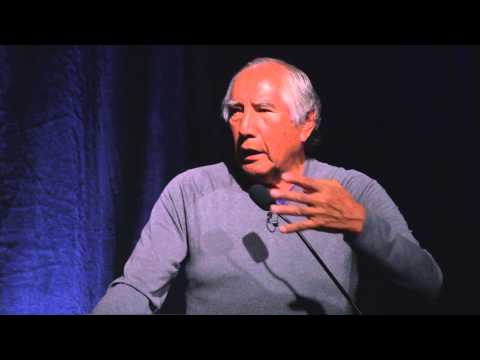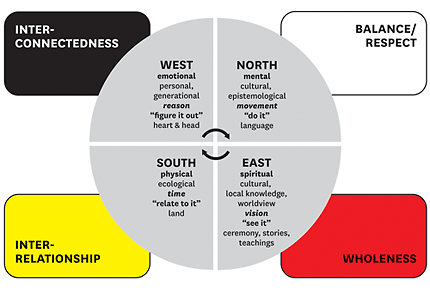
(LEA LA VERSIÓN EN ESPAÑOL ABAJO)
Today, we would like to close this cycle of posts with poetry and documentaries! In spreading intercultural awareness in the last thirteen weeks, we have been building bridges between the voices and the struggles to defend Water throughout Abya-Yala / Turtle Island. Today is a special day because we would like to share with you the vision behind this project, and the synchronism of last weeks, which has made us think that this is just the beginning. In 1984, the Four Worlds International Institute published The Sacred Tree. Reflections on Native American Spirituality. In the first chapter, we can read the following story:
The ancient ones taught us that the life of the Tree is the life of the people. If the people wander far away from the protective shadow of the Tree, if they forget to seek the nourishment of its fruit, or if they should turn against the Tree and attempt to destroy it, great sorrow will fall upon the people. The people will lose their power. They will cease to dream dreams and see visions. They will begin to quarrel among themselves over worthless trifles. They will become unable to tell the truth and to deal with each other honestly. They will forget how to survive in their own land. Their lives will become filled with anger and gloom. Little by little they will poison themselves and all they touch.
It was foretold that these things would come to pass, but that the Tree would never die. And as long as the Tree lives, the people live. It was also foretold that the day would come when the people would awaken, as if from a long, drugged sleep; that they would begin, timidly at first but then with great urgency, to search again for the sacred Tree. (The Sacred Tree 7)
In the last decades, Indigenous Elders and advocates have been talking about the kinship trails across the Americas—the roots, the trunk and the branches of the Abya-Yala. We believe that all of the protagonists highlighted over the last twelve posts are recovering the vision of the Tree, and that the Indigenous World Forum on Water and Peace is part of the trails and crossroads of the Tree. Global mobilizations such as 2009 Mama Quta Titikaka, and Idle No More are part of the roots and fruits of the Tree. Current ceremonial exchanges among the Mayan Tatas and Amazonian Taytas are part of the roots and fruits of the Tree.
And this is probably the reason why the same text was used recently in documentary The Encounter of the Eagle and the Condor by Clement Guerra. In this astonishing project, the Elder Casey Camp read the story of The Sacred Tree while Nature spoke through the lens.
On September 27th, 2015, the night of the full moon eclipse, with the support of Indigenous Rising, Indigenous Environmental Network, Amazon Watch, Pachamama Alliance, and Rainforest Action Network, native women from the seven directions of Abya-Yala / Turtle Island met in New York and signed an Indigenous Women’s Treaty of the Americas. As we can learn from Defenders of Mother Earth–another piece by Guerra–Elder Casey Camp (Ponca Pa’tha’ta, USA), Patricia Gualinga (Sarayaku, Ecuadorian Amazon), Gloria Ushigua Santi (Sapara, Ecuadorian Amazon), Pennie Opal Plant (Yaqui/Choctaw/Cherokee, USA), Crystal Lameman (Beaver Lake Cree, Canada), and Blanca Chancoso (Kichua, Ecuadorian Andes) became family that day in a gesture of solidarity, creating a cross-border allegiance. A couple of months before the UN Climate Change Conference in Paris (COP 2015), the Indigenous Women’s Treaty of the Americas stated their demands to the world —100% renewable energy, the protection of the web of life, and to keep fossil fuels in the ground.
In tune with these trans-indigenous encounters, our friend Fredy Roncalla from Hawansuyo, sent us four poems by Omar Aramayo, a poet from the Titikaka Lake (Puno, Peru). One of them was entitled “The Water Battle”. And, a day after, Kim Shuck, Cherokee poet and contributor to the Indigenous Message on Water, sent us a poem entitled “War”. Neither of them knew about the synchronism! Immediately, we decided to translate the poems and include them in this sprout/post of the Tree. We hope that you enjoy them as much as we did!
Kim Shuck is a poet and visual artist of Tsalagi and Polish ancestry. Her first solo book, Smuggling Cherokee, won the Diane Decorah award in 2005 and was published by Greenfield Review Press. Her first book of prose, Rabbit Stories, came out in 2013 from Poetic Matrix Press. Kim is a founding member of the de Young Museum’s Native Advisory Board (San Francisco) and curates poetry events all over the Bay Area. She also edits the very irregular online journal Rabbit and Rose => http://kimshuck.com/
WAR
By K. Shuck
And in the water war we will
Paint signs of bravery and
Protection onto the
Salmon the
Trout and wade into the
Streams with them and they will
Paint us back in the
War of clear water we will
Insist that water be local and when it
Can’t be local we will weigh the benefit to the
Real costs of lawns in the
Desert or apricots and almonds we will
Seek to understand other people’s
Prayers and what gets flooded by
Dams or drained by canals and
Will consult the birds about the
Wetlands and they might paint us too and the
Consulting board will offer seats to pines and
Sunflowers who defended the people the
Last time and the wolves and beavers who change the
Streams will also be heard and we
Cannot lose cannot
Lose
Omar Aramayo is an Andean poet, journalist, composer, and scholar. Since the 1960s, Omar has published experimental poetry, weaving music, visual arts and ancient traditions from the Titikaka Lake => http://poesiasdeomararamayo.blogspot.com/
THE BATTLE FOR WATER
By Omar Aramayo
Battle of people
battle of terror
the great battle of horror grabs us with stabs in the back
with kicks with bullets with toxic gases with electric nets
although we just realized it, it started a long time ago
the battle in which the word neighbor is broken eyelash by eyelash
cell by cell
an immense forest seeded with dead bodies from all species
the ocean in which the dead have sat down to have dinner
her servants assure they will bring to her every single living being
the keyboard of life has been broken overnight
a wave of sand rises in the wind
one behind the other
the water has gone with life
the survival of the species in the weight scale of doubt
those who are on the other side spit out in the face of life
the square is missing one of its sides
the circle is missing its equidistant center
intelligence has been used in the wrong way
being human has lost its meaning
its sacred side
has lost itself
the hearts of merchants are empty of god
they lie in their houses in front of their children
they lie in front of their wives
until they take their masks off
and their wives and children get in gear
in the name of wealth, the welfare
the personal finances
the order the power the prestige
someone tries to make us understand that this is in the name of the country
someone pops up in the screen speaking in the name of all
right now it’s necessary to know that we live in a country without tomorrow
the loggers the miners
the makers of big machines of big toxins
the city-factories set up on pirate ships
the bankers the politicians
those who sell everything in this time that everything is being sold
even the life they have sold
they have poisoned the earth
they have thrown ulcers on it
they have thrown dead on the water
the air is now full of monsters
lead flows through the children’s blood
elders die bleeding children are born idiotic
women scratch their sterile woumbs
this is the moment to put a stop
maybe there is still something beyond hope
hope is abandoned in the shores of the sea
like beached whales like birds or fish wrapped in plastic
Body of water mouth of water blue planet
other beings have emerged from the darkness
to kill you in the name of gold
to cut your neck as if you were the sweetest animal
of one stroke
an open pit
give us your word give us your blessing
your transparency where the fish glide
lit by the stars
give us the strength
in this battle of terror
What are you going to do city folk
women from plains and mountain ranges
child from the deserts who was just painted with a moon in the forehead
great lightning eye chief from the mountain
great medicine-men with a vegetal mother
teacher who swims toward the islands
agronomist who has lost the hat of the dreams
what are you going to do at this hour
I want to know I want you to tell us what is your role
you the irascible
and you who are a soul of god
in the great battle for water we are all the same
devil’s lawyer accountant who is cooking the books
you have been caught red-handed
facing bakwards painting a strange graffiti in the walls
lonely serpent eye which whistleling to the sun at noon
how are we going to stop the Dark One
the King Midas covered in gold in the center of a sea of shit
mud sand blowing without mercy
the salt period is coming
traces of the crime are planted everywhere
corpses of the criminals spread as cheap jewelry
hanging dry from their feet in the dust in the wind
the planet has been decimated due to lack of intelligence
of fine love
I want to hear your voice
I want to see your hands your chest
your sane intelligence resonating throughout the skies
so the planets might be touched
and the glaciers be dressed again and the streams be flowing full of health
(Translated by Fredy Roncalla and Juan G. Sánchez M.)
Although both poems paint an upside down world, where pollution and pain make us deaf and blind, both poems also envision a victory, where streams will be heard and glaciers will be dressed again. As Elder Josephine Mandamin asked us in our previous post, the main question remains: “what are you going to do city folk?”
Thank you for your patience and support for the past thirteen weeks. Thank you for sharing and spreading this message.
In humility,
Indigenous Message on Water
***
Mientras El árbol siga viviendo, la gente vivirá”: el encuentro entre el águila, el cóndor y el quetzal
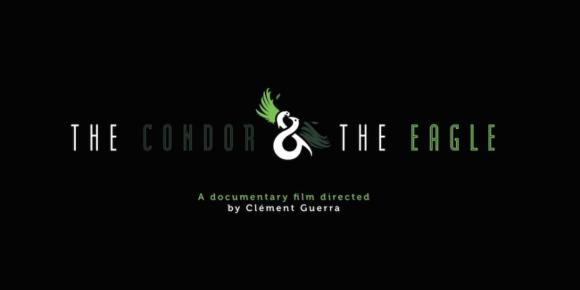
Hoy queremos cerrar este ciclo con poesía y documental! Diseminando este mensaje intercultural de las últimas trece semanas, hemos tratado de construir puentes entre voces y luchas que están defendiendo el agua a lo largo y ancho del Abya-Yala y la Isla Tortuga. Hoy es especial porque vamos a compartir con ustedes una de las visiones que está detrás de este proyecto, además de las convergencias de los últimos días, las cuales nos han hecho pensar que esto es solo el comienzo. En 1984, el Instituto Internacional de los Cuatro Mundos publicó El árbol sagrado. Reflexiones sobre la espiritualidad nativo-americana. En el primer capítulo, encontramos la siguiente historia:
Los más antiguos nos enseñaron que la vida de El árbol es la vida de la gente. Si la gente deambula lejos de la sombra protectora de El árbol, si ellos olvidan buscar el alimento de su fruto, o si ellos se alzan en contra de El árbol e intentan destruirlo, gran pena caerá sobre ellos. La gente perderá su poder. Cesará de soñar y de tener visiones. Comenzará a pelear por nimiedadez sin valor. Llegará a ser incapaz de decir la verdad y de relacionarse con honestidad. Olvidará cómo sobrevivir en su propia tierra. Sus vidas llegarán a estar llenas de rabia y melancolía. Poco a poco la gente se envenenará a sí misma y a todo lo que toca.
(…) Se predijo que estas cosas sucederían, pero que El árbol nunca moriría. Y mientras El árbol siga viviendo, la gente vivirá. También se predijo que llegaría el día en que la gente se despertaría, como de un largo y pesado sueño; que la gente comenzaría, tímidamente al comienzo y después con gran urgencia, a buscar de nuevo El árbol sagrado… (The Sacred Tree 7)
En las últimas décadas, mayores, educadores y activistas indígenas han hablado sobre los senderos de parentesco entre los pueblos ancestrales que habitan las raíces, el tronco y las ramas del Abya-Yala / Isla Tortuga. Nosotros creemos que todos los protagonistas de los últimos doce posts están recobrando la visión de El gran árbol, y el Mensaje Indígena de Agua quisiera ser parte de este despertar. Movilizaciones globales como Mama Quta Titikaka en el 2009, o movimientos trans-indígenas como Idle No More son parte de las raíces y los frutos de El árbol. De igual forma, los intercambios ceremoniales que tatas mayas y taytas amazónicos han establecido en sus peregrinajes por fuera de su territorio ancestral, son parte de las raíces y los frutos de El árbol.
Y esta es probablemente la razón por la cual el mismo texto que citamos arriba fue usado recientemente en el documental The Encounter of the Eagle and the Condor, dirigido por Clement Guerra (2015). En este proyecto, la abuela Casey Camp lee la historia de El árbol sagrado mientras la naturaleza habla através del lente.
El 27 de septiembre de 2015, la noche del eclipse lunar, con el apoyo de Indigenous Rising, Indigenous Environmental Network, Amazon Watch, la Alianza Pachamama, y Rainforest Action Network, mujeres indígenas provenientes de las siete direcciones del Abya-Yala / la Isla Tortuga se encontraron en Nueva York y firmaron el Tratado de las Mujeres Indígenas de las Américas. Como se puede ver en Defensoras de la Madre Tierra – otro breve documental de Guerra – las mayores Casey Camp (Ponca Pa’tha’ta, USA), Patricia Gualinga (Sarayaku, Amazonía ecuatoriana), Gloria Ushigua Santi (Sapara, Amazonía ecuatoriana), Pennie Opal Plant (Yaqui/Choctaw/Cherokee, USA), Crystal Lameman (Beaver Lake Cree, Canadá), y Blanca Chancoso (Kichua, Andes ecuatorianos) decidieron crear una alianza más allá de las fronteras de los estados-nación, y convertirse así en familia en un gesto de solidaridad trans-indígena.
Unos meses antes de la Conferencia sobre Cambio Climático en París (COP 2015), el Tratado de las Mujeres Indígenas de las Américas dejó claro sus demandas para el mundo: 100% energía renovable, hay que dejar los combustibles fósiles bajo tierra, y ante todo la protección de la red de la vida.
Sintonizado con estos encuentros trans-indígenas, nuestro amigo Fredy Roncalla de la revista virtual Hawansuyo, nos envió cuatro poemas de Omar Aramayo, escritor del lago Titikaka (Puno, Perú), justo cuando estábamos redactando esta nota final. Uno de los poemas de Aramayo se titulaba “La batalla por el agua”. Y un día después, Kim Shuck, poeta Cherokee y colaboradora del Mensaje Indígena de Agua, nos envió a su vez un poema titulado “Guerra”. Por supuesto, ¡ninguno sabía acerca de estas confluencias! Inmediatamente, decidimos con Fredy traducir los poemas, los cuales compartimos aquí abajo para ustedes. Esperamos que los disfruten tanto como nosotros. ¡Gracias a Kim y a Omar!
Kim es poeta y artista visual de descendencia Tsalagi y Polaca. Su primer libro, Smuggling Cherokee, ganó el premio Diane Decorah en el 2005 y fue publicado por Greenfield Review Press. Su primer libro en prosa, Rabbit Stories fue publicado en el 2013 por Poetic Matrix Press. Kim es miembro fundador del consejo asesor indígena del Museo de Young (San Francisco) y organizadora de eventos de poesía en toda el Área de la Bahía de esta ciudad. Ella también edita la esporádica revista en-línea Rabbit and Rose. http://kimshuck.com/
GUERRA
K. Shuck
Y en la guerra por el agua
Pintaremos signos de valentía y
Protección sobre el
Salmón y la
Trucha y nos meteremos con ellos de
Cabeza en las corrientes y ellos nos
Pintarán de vuelta en la
Guerra por el agua clara nosotros
Insistiremos que el agua sea del lugar y cuando
No lo sea tantearemos el beneficio con el
Costo real de prados en el
Desierto o melocotones y almendras
Buscaremos entender los rezos de
Otros pueblos y qué se inunda por
Represas o se drena por canales y
Preguntaremos a los pájaros acerca de
Los pantanos y puede que ellos tambien nos pinten y el
Consejo de guías ofrecerá curules para los pinos y
Los girasoles que defendieron a las gentes la
Última vez y los lobos y los castores que cambian las
Corrientes también serán escuchados y nosotros
No podremos perder no podremos
Perder
(Traducción Fredy Roncalla y Juan G. Sánchez M.)
Omar Aramayo es poeta, periodista, compositor y académico de los Andes peruanos. Desde los años sesenta, ha creado un estilo singular en el que teje poesía, música, artes visuales y tradiciones ancestrales del lago Titikaka. https://hawansuyo.com/2016/05/13/cinco-poemas-del-agua-omar-aramayo/
LA BATALLA POR EL AGUA
Por Omar Aramayo
La batalla de los pueblos
la batalla del espanto
la gran batalla del horror nos toma a puñaladas por la espalda
a puntapiés a balazos a gases tóxicos a redes electrónicas
hace tiempo que ha comenzado aunque hoy recién nos percatamos
la batalla donde se quiebra la palabra prójimo pestaña a pestaña
célula a célula
un inmenso bosque sembrado de cadáveres de todas las especies
el océano donde la muerte se ha sentado a cenar
sus sirvientes aseguran con entregarle a todo ser viviente
el teclado de la vida se ha roto de la noche a la mañana
una ola de arena se levanta en el viento
una detrás de otra
el agua se ha ido con la vida
la supervivencia de las especies en la balanza de la duda
los que están al otro lado escupen en el rostro de la vida
al cuadrado le falta uno de sus lados
al círculo su centro equidistante
la inteligencia ha sido usada en sentido contrario
el ser humano ha perdido sentido
su lado divino
se ha perdido a sí mismo
los comerciantes tienen los corazones vacíos de Dios
en sus casas frente a sus pequeños hijos mienten
frente a sus mujeres mienten
hasta que se quitan las máscaras
y los hijos y las mujeres entran al engranaje
en nombre de la riqueza el bienestar
las finanzas personales
el prestigio el poder el orden
alguien intenta hacernos creer que es en nombre del país
alguien aparece en la pantalla en nombre de todos
es necesario saber ahora que vivimos en un país sin mañana
los taladores de bosques los mineros
los fabricantes de grandes máquinas de los grandes tóxicos
las factorías ciudades montadas sobre barcos piratas
los banqueros los políticos
los que venden todo en este tiempo en que todo se vende
hasta la vida han vendido
han envenado la tierra
le han echado llagas
le han echado muerte al agua
el aire se ha llenado de monstruos
por la sangre de los niños corre plomo
los niños nacen tarados los viejos mueren desangrados
las mujeres se arañan las entrañas estériles
es el momento de ponerles alto
tal vez queda algo más allá de la esperanza
la esperanza está botada en la ribera de los mares
como ballenas varadas como los peces o las aves forradas de plástico
Cuerpo de agua boca de agua planeta azul
otros seres han salido de la oscuridad
a matarte en nombre del oro
a cortarte el cuello como si fueras el más tierno de los animales
de un solo tajo
a tajo abierto
danos tu palabra danos tu bendición
tu transparencia donde los peces se deslizan
a la luz de los astros
a la luz de ellos mismos
danos tu fuerza
en esta batalla del espanto
Qué vas a hacer hombre de las ciudades
mujer de los llanos y cordilleras
niño de los desiertos recién acabado de pintar con una luna sobre la frente
gran jefe ojo de rayo de monte adentro
gran shamán de la madre vegetal
maestro que braceas hacia las islas
ingeniero agrónomo que has perdido el sombrero del sueño
qué vas a hacer en esta hora
quiero saber quiero que nos digas cuál es tu papel
tú iracundo
y tú que eres un alma de Dios
en la gran batalla por el agua somos lo mismo
abogado del diablo contador que llevas cuentas paralelas
has sido descubierto con las manos en la masa
de espaldas pintando en los muros un grafiti muy extraño
ojo solitario de la serpiente que silbas al sol del mediodía
cómo vamos a detener al Oscuro
al rey Midas cubierto de oro al centro de un mar de materia fecal
fango arena que sopla sin piedad
se aproxima el tiempo de la sal
la huella del crimen está sembrada por todo sitio
los cadáveres de los criminales como joyas sin valor derramados
secos colgados de los pies en el polvo en el viento
el planeta ha sido abatido por falta de inteligencia
de amor fino
quiero escuchar tu voz
quiero ver tus manos tu pecho
tu sana inteligencia retumbar por todos los cielos
que los planetas se conmuevan
y otra vez se vistan los glaciares y las corrientes corran plenos de salud
A pesar de que ambos poemas pintan un mundo al revés, en donde la polución y el dolor nos han vuelto sordos y ciegos, ambos poemas vislumbran también una victoria, en donde las corrientes de agua se escucharán de nuevo y los glaciares se vestirán una vez más. Como la abuela Josephin Mandamin nos preguntaba en una de las entradas anteriores, la pregunta principal sigue intacta: ¿qué vamos a hacer nosotros, hombres, mujeres de la ciudad?
Gracias por su paciencia y apoyo en estas trece semanas. Gracias por compartir y diseminar el mensaje.
En humildad,
Mensaje Indígena de Agua




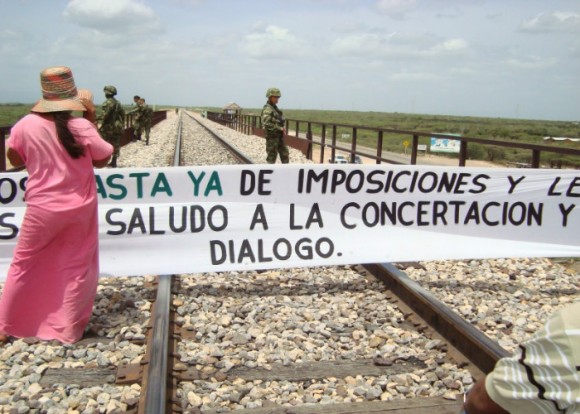


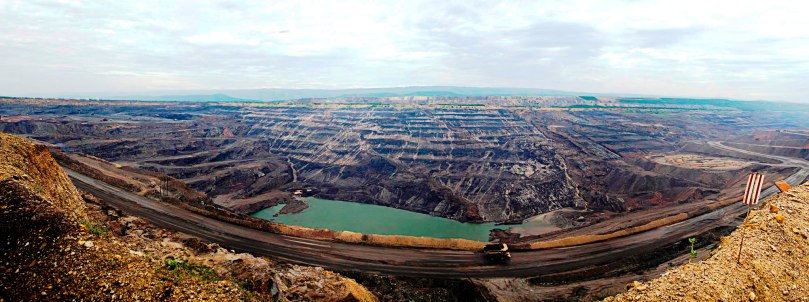
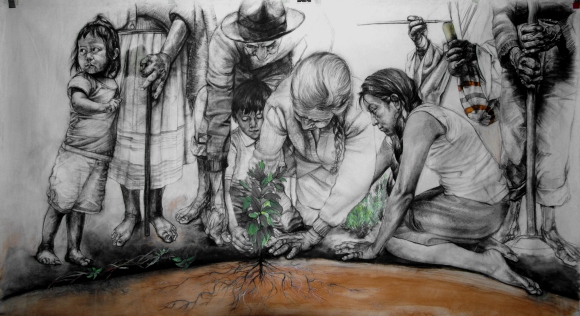
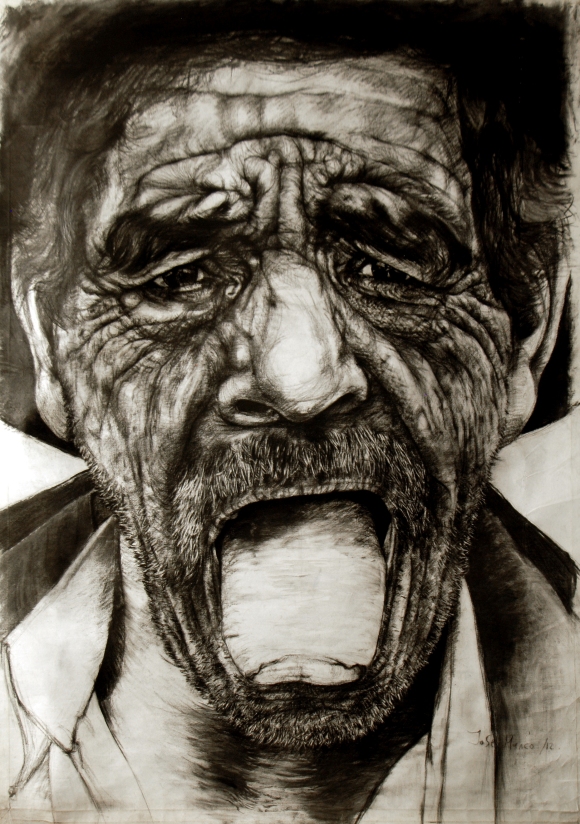

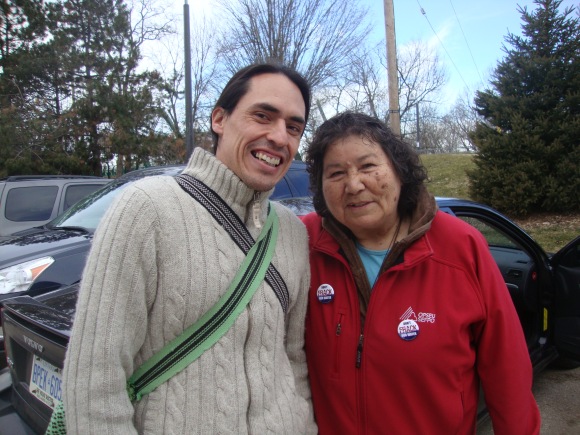
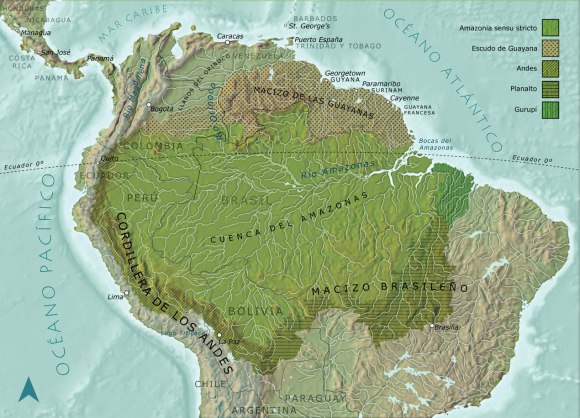 Amazonia. Map:
Amazonia. Map: 